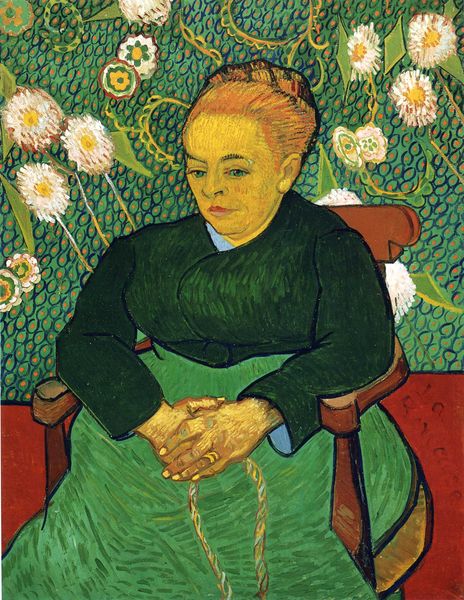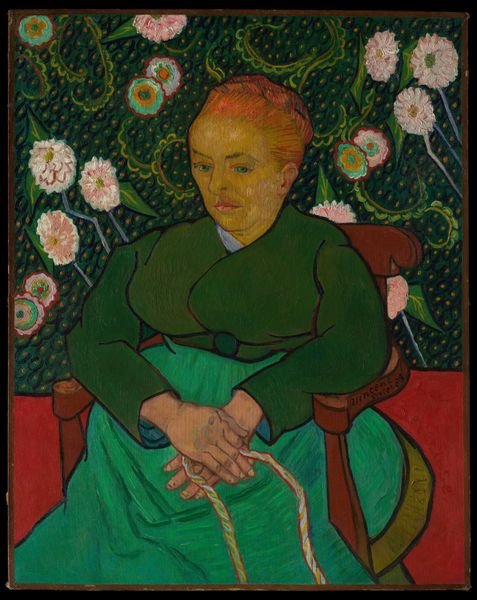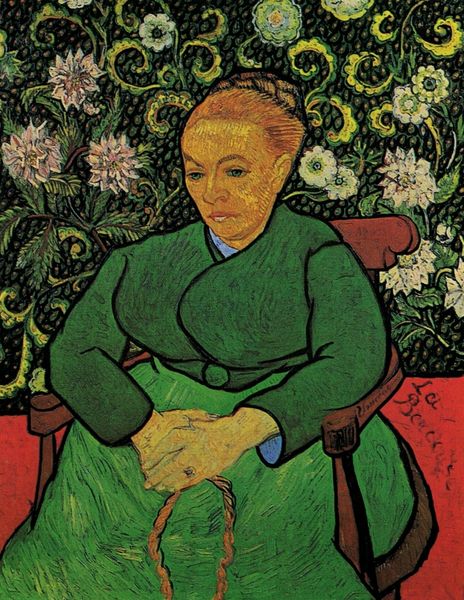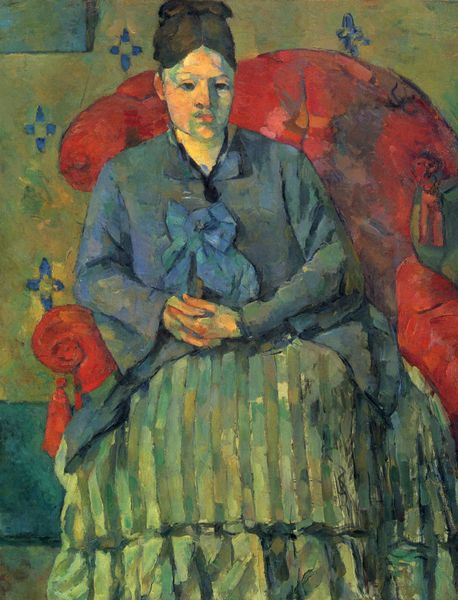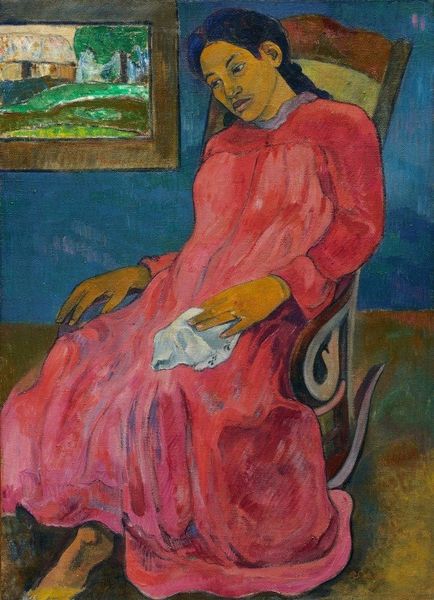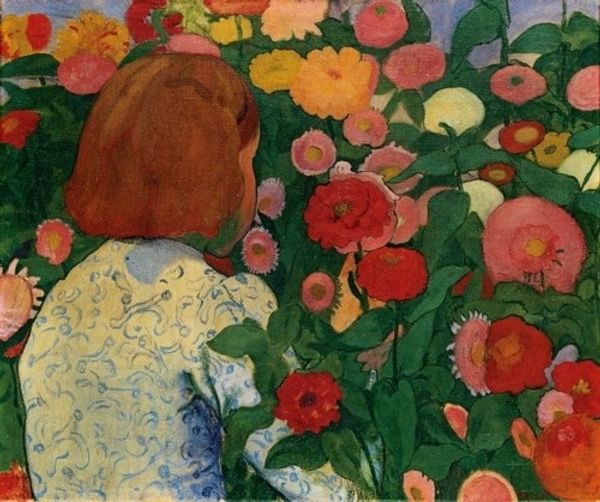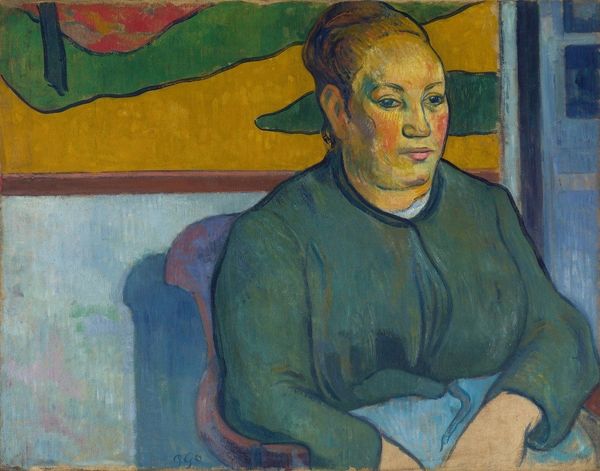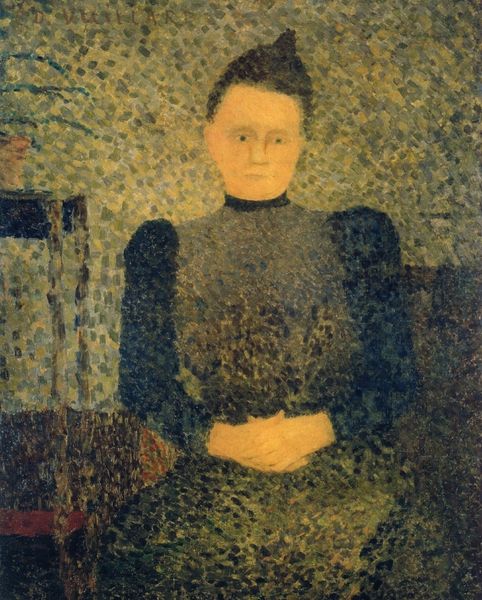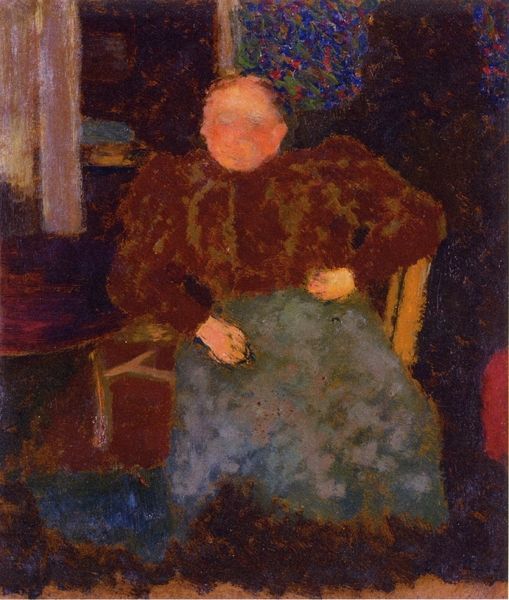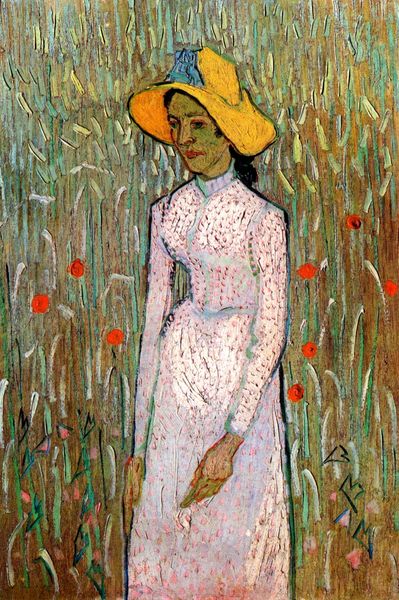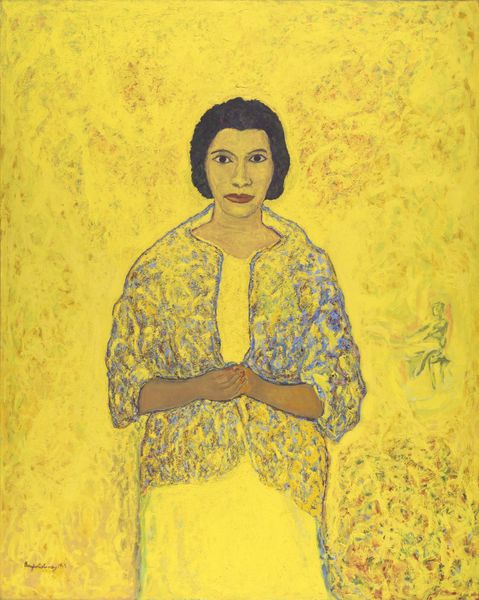
Copyright: Public Domain: Artvee
Editor: Here we have Van Gogh's "Madame Roulin Rocking the Cradle," painted in 1889, in oil. It has such a serene, almost melancholic, feeling to it, despite the bright colors. What do you see in this piece? Curator: I see a powerful statement about the often-unseen labor of women, particularly mothers. Consider the context: Van Gogh painted this while voluntarily residing in an asylum. To me, this work highlights the emotional labor involved in motherhood, particularly within the confines of domesticity. How does it challenge the traditional male gaze prevalent in portraiture of the time? Editor: I see what you mean. It's not idealized like so many portraits, it feels more real. Why repeat the floral motif on both the wallpaper and the hanging cradle? Curator: Exactly! The floral patterns link mother and child. They can be interpreted as a reference to fertility and the cycle of life. But they also point towards confinement, domestic expectations. It subtly challenges notions of female identity during that period, especially class and how social roles were viewed. Is she truly cradling, or is it just symbolic? What expectations were attached to women of this era, how do we perceive those now? Editor: That’s a powerful way to look at it! I hadn't considered the domestic expectations. It gives a completely different meaning to what I initially saw as simply a calm image. Curator: Precisely, Van Gogh used color and symbolism to expose the many complex social dynamics between family, labor, and self identity. Art allows us to look more closely. Editor: Thank you, this made me consider social expectations in relation to this painting in a new light! Curator: It's amazing how contextualizing art shifts one's perspective. Keep questioning!
Comments
No comments
Be the first to comment and join the conversation on the ultimate creative platform.

